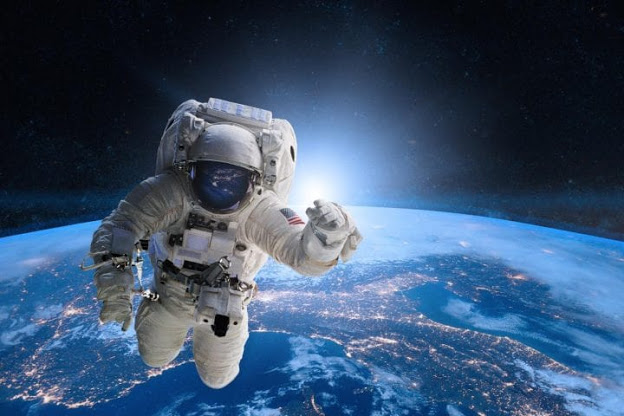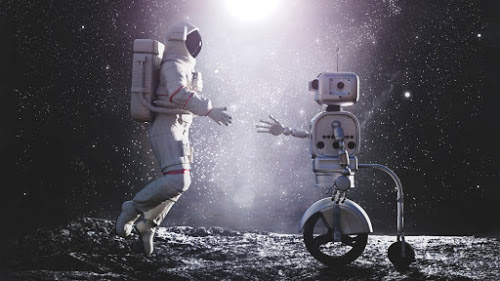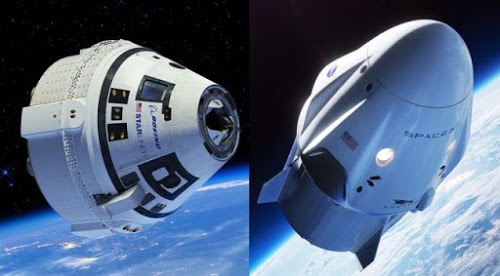

How AI Is Used In Space Exploration
The use of AI in space Researchers has similarly used AI in charting plain universes, supernovas, stars, dim openings, and pondering gigantic events that may be one way or another or another go unnoticed without using AI computations is expanding at an extraordinary pace, with the market being esteemed at a faltering $2 billion and as yet developing.
There are in reality a larger number of stars in space than there are grains of sand on Earth, and all of these stars could hold life or have a conceivably livable planet. Whether or not all humans were to unite under one umbrella and study each of these stars, they’ll end on time…
There needs to be a faster, better, and more efficient solution that will be sure of all the grunt work: enter Artificial Intelligence. This is often how we could in some unspecified time in the future make interplanetary and even interstellar travel, a true possibility. At the forefront of innovation in AI is Bosch with its advanced acoustic These ‘exoplanets‘ are found by perceiving how light carries because it goes through their environment, more notably, the SoundSee AI algorithm…
AI is Changing the character of Space Exploration

Government agencies and personal organizations alike are working to beat barriers that block progress in learning more about space. Despite space being a limitless expanse of just about the empty void, there’s always potential for real danger out there, whether it’s within the cosmic radiation, earth-shattering meteors, or colossal galactic events.
To own any chance of learning more about space so we will someday traverse safely across this exciting frontier, we’ve got to raised understand the environment and risks. Folks cannot really explore every facet of space. This can be why governments have founded multiple programs that make use of AI and ML to go looking for potentially dangerous risks and events in space.
Scientists have also used AI in charting supernovas, unmarked galaxies, black holes, stars, and studying cosmic events that might otherwise go unnoticed without using machine learning algorithms. One particularly interesting use of AI in astronomy is the ability to acknowledge and classify rocky worlds that are almost like those in our own system. These ‘exoplanets’ are turned up by recognizing how light behaves because it passes across their atmosphere.
This allows scientists to see what the final ‘consistency’ of the earth is in terms of elements that might support life, like oxygen and methane.
Then there’s the employment of deep learning to simulate galaxy formation and using it to classify galactic images seen from the Hubble Space Telescope. One advantage of AI is that it never tires and might grade consistently.
Another important area that has only recently picked up momentum is the use of acoustics in space to spot problems. Astronauts are trained psychologically and physically to cope with the acute environments in space under no gravity conditions. To put things in context, the whole universe could be a potential threat be it radiation, hot temperature, and even space flotsam and jetsam! this can be the reason it’s essential to spot and investigate issues before they emerge. Bosch’s acoustic sensors can influence be useful by distinguishing issues in space before they happen. This procedure is framed simpler with assistance from the SoundSee calculation locally available the Astrobee.
AI is Changing Life for Astronauts

Life as an astronaut aboard the International orbiter is toil. There are far too many roles to perform, not enough gravity, dwindling provisions, and therefore the ever-impending threat of being stranded move into space!
Artificial intelligence takes a number of the load off astronaut’s feet and provides them an instant of respite. Maybe increasingly imperative is that the utilization of the CIMON robot to make the life of space travelers to a lesser degree a task, and maybe, in any event, engaging. CIMON was sent to ISS utilizing the Falcon 9. This ‘flying robot’ uses voice commands and touch screens to speak with astronauts.
Then there’s the super helpful Astrobee, which sounds like it had been pulled straight out of a fiction film. This cube-shaped flying machine helps astronauts with routine tasks and uses AI and machine learning to scale back the time astronauts spend on relatively mundane tasks like identifying faults in machinery on the artificial satellite called space station. These dexterous robots also are equipped with Bosch’s SoundSee technology.
It can continuously record operating sounds from the equipment onboard the space laboratory and send them back to Earth for evaluation by scientists. More importantly, SoundSee uses AI-based sound analysis to gauge the performance of critical machines by detecting subtle irregularities in their noise patterns. This could be a crucial aid for astronauts and help them troubleshoot problems before they arise.
And the best part? Astrobee floats silently without making a noise and never gets within the personal space of astronauts as they’re going about their daily routine unless it’s needed!
Future Potential for Space Flight

Artificial Intelligence will play a vital role in space exploration. It’s helped us discover numerous exoplanets, stars, galaxies, and more recently, two new planets in our very own solar system. AI has also established new theories, like Mars once wont to have water on its surface.
NASA used machine learning to get Kepler-90i, an exoplanet that orbits a far off Sun-star only about 2,540 light-years from Earth. To place Artificial Intelligence to good use, scientists need to train the model with the assistance of neural networks to spot recorded signals.
In many ways, Artificial Intelligence may be a good way for humans to beat the varied challenges involved in spacefaring. the actual fact of the matter, humans are simply not biologically capable of spacefaring. To place things in perspective, 70% of all astronauts that go in space get sick thanks to zero gravity. This can be why an AI robot can convince be useful by identifying patterns in their behavior and giving them medical help as and once they need it.
In the case of part missions, Artificial Intelligence can play a pivotal role when reporting systems are unable to reply. Artificial Intelligence can apply deep learning to biometric authentication and speech recognition to determine a conversation with scientists. AI can perform dangerous and redundant tasks that aren’t suited to astronauts. The employment of CIMON onboard the ISS and Bosch’s SoundSee are two great samples of space exploration friendship between machine and human.
SoundSee uses its array of microphones and sensors to capture equipment sounds so uses Bosch’s highly advanced Artificial Intelligence to spot potential repairs. On Earth, SoundSee might be explored for potential applications in Industry 4.0, autonomous vehicles, and emerging building technologies. I even could imagine the SoundSee technology getting used to enhance a self-driving vehicle’s responsiveness to rescue or enforcement vehicles by automatically identifying and reacting to sirens and clearing out of their path.
Another application for AI in space is in self-driving shuttle, rather such as self-driving vehicles here on Earth. Spacecraft operators will need to train machine learning algorithms to steer further from objects in space rather than slamming right into them. There are plenty of use cases where AI is often implemented to assemble data, troubleshoot problems, and steer astronauts or critical space equipment away from danger.
Leave a Reply